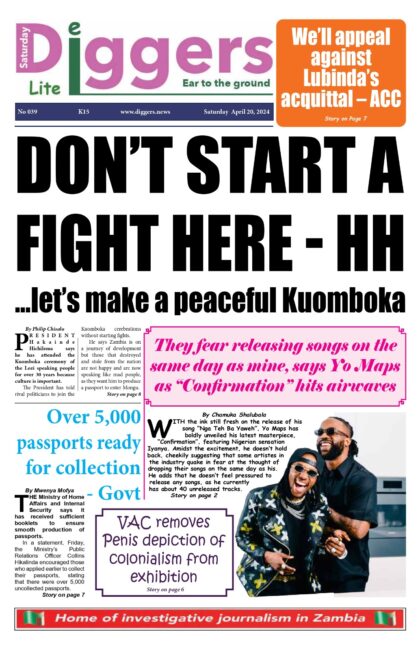The kwacha has continued to rebound against major convertibles on the foreign exchange market, touching K13.24 for buying against the United States dollar on interbank.
The British pound is racing towards K17, a gain of almost K3 from last week’s trading levels of around K19.80.
The local currency has also recorded gains against the South African rand, trading at an average rate of K0.95 from over K1 just last week while the Euro has retreated to around K14.60 from almost K16.
These gains have been necessitated by the Bank of Zambia’s adjustment of the Statutory Reserve Ratio from five per cent to nine per cent that took effect on Monday, December 23, 2019.
This new policy made commercial banks to mop up the kwacha to increase the proportion of their deposits with the Central Bank to nine per cent as required by law, in the process triggering a sharp appreciation of the local currency.
Financial market analyst Maambo Hamaundu, however, said this sharp gain will not be sustainable going into the New Year because Zambia’s economic productivity remains weak.
“When you are looking at sustainability, you can’t really sustain an appreciation over a policy pronouncement. For our currency to be strong, it must be backed by production. So, if there’s no production to back it, it will hold for a bit, but later on, we might actually see the kwacha begin to lose strength again,” Hamaundu said in an interview, Sunday.
“It will go towards where it probably ought to have gone to in the first place. If the Bank of Zambia would have allowed it, maybe, we would have seen the kwacha going to K16-K17 (per dollar).”
Zambia’s heavy external debt servicing, he said, would put the kwacha under renewed pressure after the festive season.
“Ultimately, I think that, the way our economy is structured, with our levels of indebtedness with obligations to try and settle our debt, I still see the kwacha eventually losing strength as we go into 2020,” said Hamaundu.












